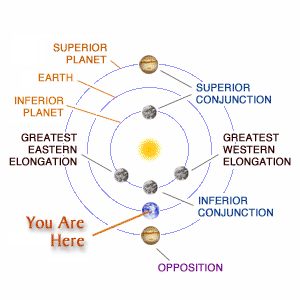 You have probably heard about inferior and superior planets and you might have wondered what these differences are. Being a superior planet doesn’t necessarily mean that a planet is huge compared to an inferior planet. The inferiority or the superiority of a planet refers to how near the planets’ orbits are in relation to Earth.
You have probably heard about inferior and superior planets and you might have wondered what these differences are. Being a superior planet doesn’t necessarily mean that a planet is huge compared to an inferior planet. The inferiority or the superiority of a planet refers to how near the planets’ orbits are in relation to Earth.
It is important to be aware of how the planets are arranged in relation to the Sun in the Solar System. We all have been taught that Mercury is the planet closest to the Sun. After Mercury comes Venus, and Earth comes in third. Mars, also known as the Red Planet is next, followed by Jupiter known as the biggest planet in the Solar System, Saturn with its beautiful rings, Uranus, and Neptune. Pluto is the farthest, but it has now been relegated to being a minor planet.
Mercury and Venus are inferior planets because their orbits lie inside that of the Earth. These two planets seem to be always close to the Sun.
An inferior planet is known to undergo phases (similar to that of the Moon), ranging from crescent to full. It also exhibits a retrograde motion.
An inferior planet is said to be at a conjunction when its position has similar right ascension on the celestial sphere as that of the Sun. When a planet is seen to be positioned between the Sun and the Earth, it is said to be in inferior conjunction. If the planet is positioned on the other side of the Sun in relation to the Earth’s position, the planet is at a superior conjunction.
Inferior Planets
